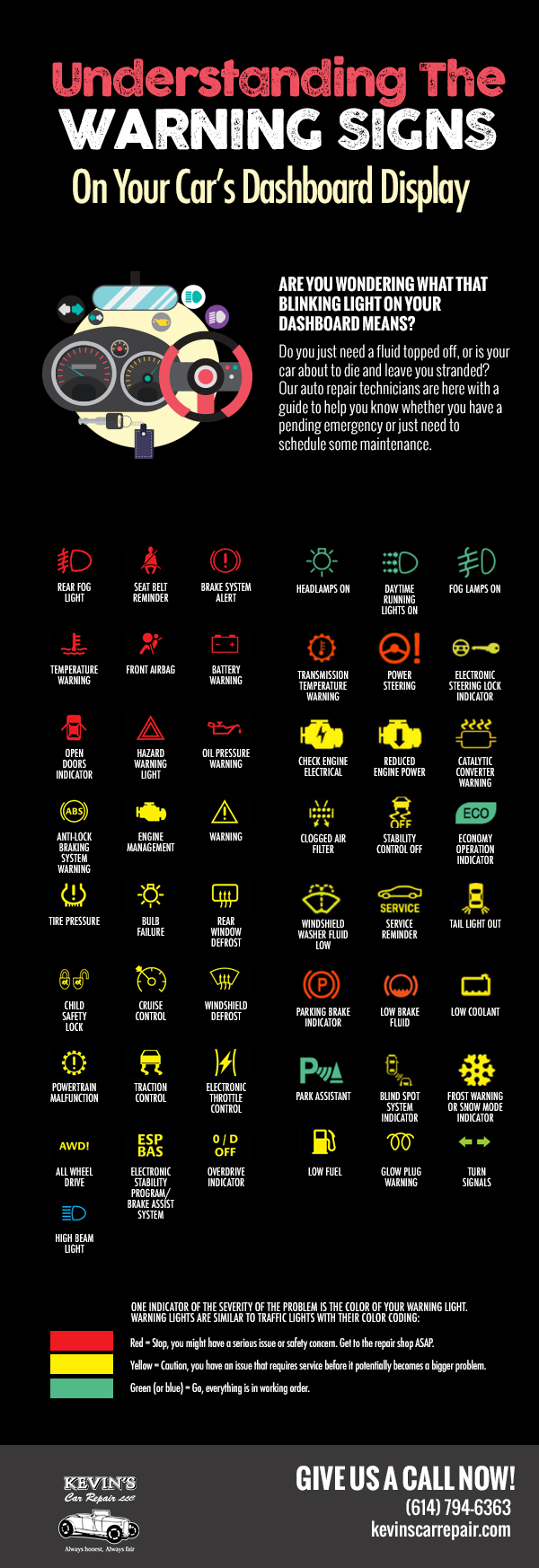Assessing Your Vehicle'S Warning Indicators: What They Truly Communicate
Assessing Your Vehicle'S Warning Indicators: What They Truly Communicate
Blog Article
washing cars By-Lauritsen Alvarado
When you're behind the wheel, those glowing warning lights on your control panel can be a little bit bewildering. Do you understand what they're attempting to tell you regarding your auto's health? Recognizing the relevance of these lights is crucial for your security and the longevity of your vehicle. So, the following time among those lights turns up, wouldn't you want to decode its message properly and take the needed actions to resolve it?
Common Caution Lights and Interpretations
Recognize typical caution lights in your auto and comprehend their significances to make certain risk-free driving.
One of the most normal caution lights include the check engine light, which indicates problems with the engine or discharges system. If this light comes on, it's critical to have your vehicle checked quickly.
The oil stress cautioning light shows low oil stress, requiring instant focus to avoid engine damages.
A flashing battery light could suggest a malfunctioning charging system, potentially leaving you stranded otherwise resolved.
The tire stress monitoring system (TPMS) light notifies you to reduced tire stress, influencing automobile security and fuel effectiveness. Neglecting this can lead to harmful driving problems.
The ABS light shows an issue with the anti-lock stopping system, compromising your capability to stop rapidly in emergency situations.
Finally, the coolant temperature advising light warns of engine overheating, which can result in serious damage if not solved swiftly.
Understanding these usual caution lights will aid you attend to concerns without delay and preserve safe driving conditions.
Value of Prompt Focus
Recognizing the common warning lights in your car is just the very first step; the value of promptly resolving these warnings can not be emphasized sufficient to guarantee your safety when driving.
When a warning light brightens on your dashboard, it's your automobile's means of connecting a prospective problem that requires focus. Disregarding these warnings can bring about a lot more severe troubles in the future, compromising your safety and possibly costing you a lot more in repairs.
https://andersonoicxq.worldblogged.com/37146011/leading-10-tips-for-selecting-the-best-auto-service-center-near-you to warning lights can stop break downs and mishaps. As an example, a blinking check engine light can indicate a misfire that, if left unattended, might cause damage to the catalytic converter. Resolving this quickly can save you from a costly fixing.
Likewise, a brake system advising light may signal reduced brake fluid or worn brake pads, vital components for your safety and security when driving.
Do It Yourself Troubleshooting Tips
If you discover a warning light on your control panel, there are a few DIY troubleshooting suggestions you can try before seeking expert assistance.
The primary step is to consult your auto's manual to understand what the certain caution light indicates. Often the problem can be as straightforward as a loosened gas cap causing the check engine light. Tightening up the gas cap might solve the problem.
https://www.wfla.com/news/hillsborough-county/fire-engulfs-valrico-auto-repair-shop/ is a reduced battery, which can activate various warning lights. Inspecting the battery links for deterioration and guaranteeing they're protected could repair the trouble.
If a caution light persists, you can attempt resetting it by disconnecting the car's battery for a couple of minutes and after that reconnecting it. Additionally, checking your car's liquid levels, such as oil, coolant, and brake liquid, can assist troubleshoot cautioning lights associated with these systems.
Verdict
In conclusion, recognizing your automobile's caution lights is essential for keeping your vehicle running smoothly and securely. By without delay dealing with these informs and understanding what they mean, you can stay clear of pricey fixings and prospective malfunctions.
Remember to consult your cars and truck's handbook for certain details on each cautioning light and do something about it as necessary to guarantee a trouble-free driving experience.
Stay informed, stay secure on the road!
